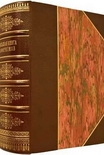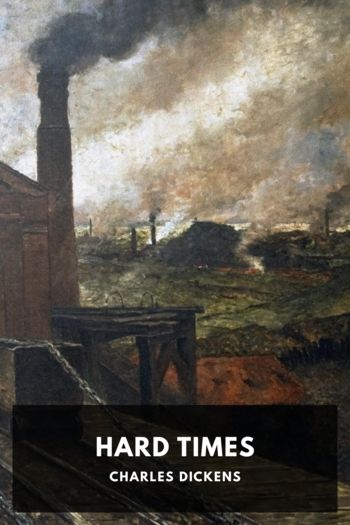Hitler's Terror Weapons Brooks, Geoffrey (bts books to read TXT) 📖

Book online «Hitler's Terror Weapons Brooks, Geoffrey (bts books to read TXT) 📖». Author Brooks, Geoffrey
The Last Two Leipzig Experiments
Heisenberg’s paper G-136: The Proof by Experiment of Effective Neutron Multiplication in a Layered arrangement of Heavy Water and Uranium Metal in a Sphere68 was undated but delivered with a covering letter dated July 1942, the month following an accident which destroyed Heisenberg’s Leipzig apparatus. The report was stamped Geheime Kommandosache (i.e. very secret), an unusual classification which may possibly be explained by the conclusion in the summary that:
“A spherical arrangement of 17-cm wide layers of heavy water and 4-cm wide layers of uranium metal density 10 separated by 2 to 5mm thick aluminium support material has a negative coefficient for neutron absorption. The mere enlargement of the layered arrangement described herein will lead to a uranium pile for the production of nuclear energy.”
In L-II the previous year, using uranium oxide, the experiment had given a positive neutron coefficient which was very marginal: there had been a neutron multiplication but this had been lost to the aluminium material of the sphere.
L-IV consisted of two aluminium hemispheres bolted together at the equator. A chimney was fitted through which the Präparat would be dropped into the centre to initiate the reaction. The apparatus was bedded on a foundation of waterproofed wooden beams in a zinc tub filled with ordinary water. The internal arrangement was a 17-cm radius aluminium sphere with walls 1.2 mm thick. This contained 140 kilos of heavy water and the Präparat. The inner sphere rested on a lower hemispherical shell of 5-mm aluminium plate containing 90 kilos of uranium powder of density 10.8 and this in turn rested on a larger hemisphere filled with 660 kilos of uranium powder of density 9.34.
The measurements showed a neutron multiplication of 13%, and with this apparatus Heisenberg had succeeded in generating more neutrons than provided by the Präparat source. Simply by increasing the size of the sub-reactor one would eventually have a working uranium pile for the production of nuclear energy.
For the reactor builder the next step was an experiment in which the materials were increased and on 31 July 1942 in G-161 Observations on the Planned Intermediate Experiment with 1.5 tonnes Heavy Water and 3 tonnes Uranium Metal Heisenberg did precisely that. It was logical. But what was not logical was that meanwhile he had set up a duplicate of L-IV. He knew what would happen. The uranium fuel would gradually become more radioactive with the products of fission and plutonium being formed in the U238 resonances, but what would that have to do with reactor technology?
On 2 June 1942 the experiment began. 750 kilos of uranium metal powder in the outer shere surrounded a central sphere of heavy water. As before, the apparatus was immersed in a vat of ordinary water, the Präparat was dropped into the centre via the chimney, and Heisenberg, Mr and Mrs Döpel, master mechanic W. Paschen and technician G. Kunze, who monitored the gamma-radiation instrumentation, all sat back for a few months to see what would happen next.
In the U-metal/paraffin experiment B-III, measurements were made of neutron capture by the resonances along the diagonals outward from the central Präparat. From this information it was a straightforward matter to plot where the diminishing neutron velocities coincided with the greatest incidences of neutron capture, and this was in fact known as Factor e/w where w = probability of resonance capture.
The concentric inner sphere of Heisenberg’s L-V experiment at Leipzig contained 220 litres of heavy water, the small nickel ball with the radiumberyllium neutron source being at its centre. This Präparat played a twofold role. It emitted neutrons into the heavy water where they lost a degree of momentum before proceeding into the surrounding uranium metal powder. Here they fissioned U235 atoms to release more neutrons into the reaction or were captured by U238 isotopes to decay into plutonium. Additionally, gamma radiation from the neutron source generated photoneutrons in the heavy water and these also entered the uranium. Over a period of many months this ‘experiment’ would be a subtle means of uranium enrichment, since a measureable proportion of the U238 capture band converted into the fissile isotopes of plutonium. After his return to Leipzig University on 23 June 1942, it was noticed that the sphere, which had been quietly fissioning for three weeks, was leaking bubbles. The equipment was raised from the water and an access hatch opened to inspect the interior. A hissing sound was followed by a jet of flame. The sphere was hosed down with water until the fire appeared to be extinguished. The heavy water was then drained from the inner sphere to prevent its accidental contamination, after which the main sphere was re-sealed and lowered back into the water tank for safety. A few hours later the apparatus began to give off bubbles once more and the water in the containing tank began to boil. On closer inspection it was seen that the sphere was vibrating and beginning to swell in size. The laboratory was evacuated and shortly after there was an explosion involving a hailstorm of burning uranium powder. The fire brigade succeeded in dowsing all fires except that in the sphere which was allowed to burn out over the next few days.
How did this fire start? Possibly fissioned material in the powdered uranium began to warm up. As it expanded, the pressure cracked the seal holding the two aluminium hemispheres together, allowing water to enter from the shielding tank. This would have oxidized the uranium, generating more heat. But the ignition source is a mystery. The material burnt out and the attempt to do whatever it was that was being attempted failed. So terminated this





Comments (0)